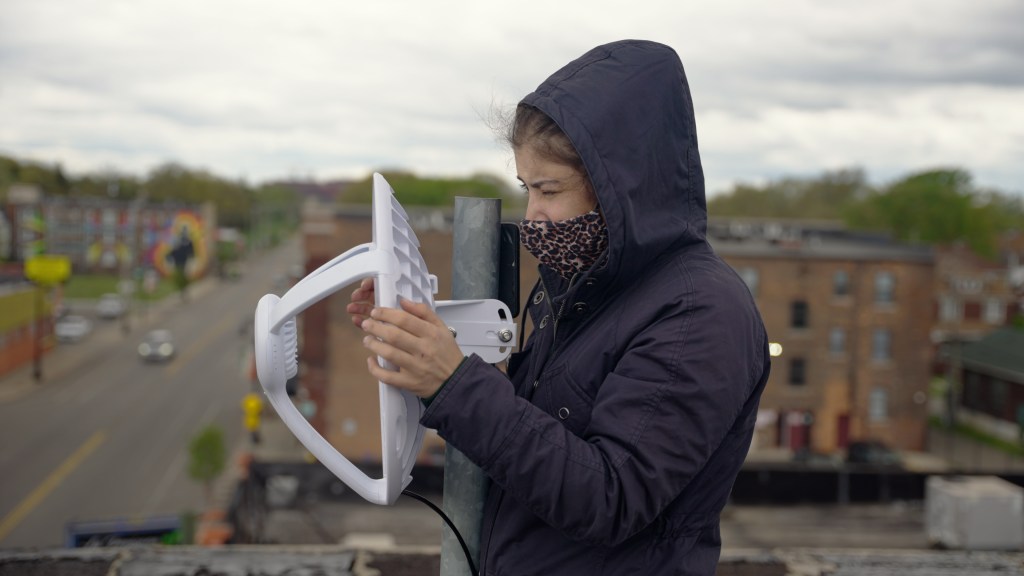How scientists are trying to help save people from avalanches and manage the impacts of climate change from space
 Using new satellite technology, scientists will better understand snow around the world, to save lives and mitigate the impacts of climate change on snow and water.
Using new satellite technology, scientists will better understand snow around the world, to save lives and mitigate the impacts of climate change on snow and water.
The ‘Queen of Vegan Cheese’ is trying to change the way we eat to save the planet
Miyoko’s Creamery is producing vegan cheese and butter, using less water and land than dairy alternatives, to try to reverse climate change.
How electric planes could soon rule the skies
A high-flying California startup is aiming to revolutionize aviation–and help save the planet at the same time
The aviation industry is currently producing about 3% of global carbon emissions, and as other industries electrify and reduce emissions, that percentage will only increase. Ampaire, a small LA-based startup, is trying to disrupt the aviation industry by building quieter, cheaper, and cleaner planes through electrification.
How to free an entire prison and help it find new life as a farm
There are nearly 300 abandoned prisons littering the United States. One innovative program shows how turning them into sustainable farms can make them productive and help solve the incarceration crisis at the same time
Despite closing 20 years ago, the Scotland County Correctional facility in Wagram, North Carolina, is a busy place. Instead of being filled with inmates, it’s now bustling with sheep, chickens, cows, a guard donkey, and a crew of enthusiastic local teenagers who are a part of an organization called Growing Change. Led by a charismatic clinical social worker named Noran Sanford, the program works to keep youth out of the criminal justice system by flipping the derelict prison into a sustainable farm and community resource center.
How Congress is literally going to the birds!
 An ingenious guide teaches bird watching as a way of connecting disconnected people in Washington DC to environmental and justice issues
An ingenious guide teaches bird watching as a way of connecting disconnected people in Washington DC to environmental and justice issues
For Tykee James, birding is much more than simply spotting birds–it’s a way of connecting people to their environment. James is the Government Affairs Coordinator for National Audubon Society, and leads monthly birdwalks for Congressional staffers around the National Mall near the Capitol. The walks are non-partisan and mostly non-political, but James hopes that by getting people outside and engaging with the birds, they’ll start to care about them, and conservation, at a deeper level.
Fighting injustice in the most unlikely surf spot in America
How Lou Harris and his Black Surfing Association are helping kids make waves in New York City
In 2016, Lou Harris started the East Coast chapter of the Black Surfing Association, to provide free surfing, skateboarding, swimming, and cooking lessons, for kids who otherwise would not be able to have access to these activities. To Lou, it’s all about keeping kids busy and active in Rockaway, and to educate them about their environment. “If you live here, you should know the drop offs and how to get out of a riptide,” he says. “This is your backyard.”
How drones are fighting fire with fire in the American West
From high overhead, drones can drop chemical balls to set controlled burns that help contain raging wildfires
As the climate changes dramatically, droughts and heatwaves have become much more dangerous. Combined with decades of policies that prevented the controlled burning of fire-prone forests, much of the American West is now a tinderbox. New technology allows firefighters to start prescribed burns via drone, to safely reduce the risk of wildfires.
In amazing leap, scientists map the feeling of touch into the brains of subjects with paralysis
Cutting-edge technology enables people to ‘feel’ with prosthetic limbs they move remotely with their brains
New research shows that by adding a sense of touch to a robotic hand, participants are able to complete tasks nearly two times faster, completing a grabbing task in 10 seconds with the sensory feedback, instead of the 20 seconds it took before. This represents a huge advance in the pursuit of more natural movement through BCIs and prosthetics.
How Detroit residents are building their own internet

Faced with a stark digital divide, Detroit community groups are mobilizing to build an internet network block by block
Detroit has historically been one of the least connected cities in America, with about 40% of Detroit residents lacking any home internet access at all. Things are changing, though, thanks in large part to projects like the Equitable Internet Initiative (EII), a collaboration between the Detroit Community Technology Project and a network of community organizations.
How the miracle of robotic surgery can save the lives of Americans no matter where they live

With new technology worthy of science fiction, a top surgeon in New York will be able to operate on a dying patient in rural Michigan
Less than half the population in rural America can reach a cath lab within an hour – and that lack of proximity can be deadly. As internet access and connectivity increase around the US and the world, robotic telesurgery will enable patients living anywhere to get access to cutting-edge healthcare much faster, regardless of whether a doctor is in their town, state, or even country.
changing america copyright.





